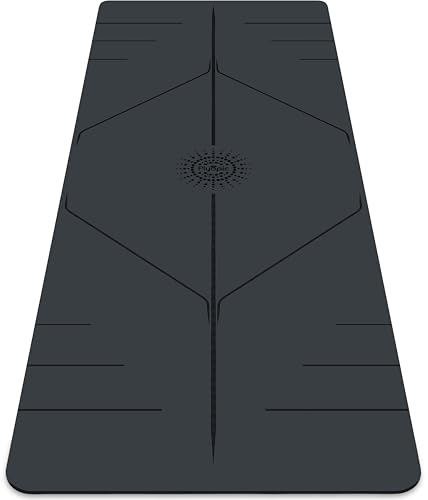




If you’ve observed your furry companion bending and stretching in ways that remind you of a feline, this behaviour is often linked to their natural instincts and physical health. Unlike humans, animals have unique ways of expressing comfort and relaxation, and these movements can indicate a happy and content pet.
One common reason for this behaviour is the need to relieve muscle tension. Just as we might do a few stretches after sitting for too long, your four-legged friend engages in these motions to promote blood circulation and maintain flexibility. I’ve noticed how my own pet often performs this routine after a good nap, as if preparing for the next round of playtime.
Another aspect to consider is the innate instincts carried from their ancestors. When hunting or playing, these gestures can help them prepare their muscles for action. I remember watching my pup before a game of fetch; the way he arches his back and extends his legs seems to channel an energetic readiness that’s hard to miss.
Be mindful of the frequency and context of these stretches. If your companion is stretching excessively or showing signs of discomfort, it might be worth a visit to the vet. Regular observation of their behaviour can provide insights into their well-being and happiness. Keeping a close eye on these little quirks not only enhances your bond but also ensures your pet stays healthy and active.
Understanding the Stretching Behaviour in Dogs
Often, you’ll see your furry companion arching their back and extending their legs. This action serves multiple purposes, primarily related to physical well-being and social interaction. It’s a natural behaviour that signifies comfort and readiness to engage with their surroundings.
Physical Benefits
Engaging in this movement helps maintain flexibility and muscle tone. Just like humans, our four-legged friends benefit from warming up their muscles. This is particularly important after a period of rest, as it prepares their bodies for activity and helps prevent injuries. Regularly observing this behaviour can also indicate a healthy lifestyle; if your pet exhibits this regularly, it’s a good sign they are active and fit.
Social Signals
This posture can also function as a form of communication. When your companion stretches in front of you, it may be an invitation to play or interact. This behaviour can be particularly pronounced in younger animals, who often seek out social connections. Recognising this signal can enhance your bond and encourage more playtime together.
Common reasons for canine stretching
Many reasons account for this behaviour. Firstly, it serves as a natural way for animals to warm up their muscles, preparing them for activity. After a long nap, I often notice my four-legged friend getting up and performing a full-body extension, which seems to help shake off the sleepiness and get ready for playtime.
Relieving tension
Another reason involves relieving built-up tension. Just like us, these furry companions experience stiffness after resting for an extended period. I remember a day when my pup had been lounging on the couch all afternoon; once he finally got up, he did a long, deep stretch that seemed to ease his muscles after a lazy spell.
Communication and social interaction
Stretching can also signal a friendly intent or an invitation to engage. I’ve witnessed instances where my pet approaches other dogs in the park and instantly drops into a stretch. It appears to signal, “I’m relaxed and ready to play!” Such behaviours foster social bonds and can be particularly evident in playful encounters.
In summary, whether it’s to warm up, relieve tension, or communicate, stretching is a fascinating aspect of canine behaviour that reflects their physical and emotional state. Observing these habits can lead to better understanding and stronger bonds with our beloved companions.
Differences between canine and feline stretching
Canines and felines exhibit distinct methods of elongating their bodies, influenced by their unique physiological structures and behavioural traits. Understanding these differences can offer insights into their health and emotional states.
Stretching Techniques
- Positioning: While both species utilise the well-known ‘downward dog’ pose, canines often incorporate more variations. They may stretch with their front legs extended while keeping their back legs upright, whereas felines typically maintain a more uniform posture.
- Duration: Lengthier stretches are common in felines. They seem to relish in the act, often holding poses longer than their canine counterparts, who may stretch briefly before returning to activity.
- Bodily Movement: Felines often combine stretching with rolling or playful behaviour, integrating movement into their routine. Conversely, canines usually perform stretches as standalone actions, preparing for play or exploration.
Physiological Implications
- Muscle Flexibility: Felines are built for agility, which is reflected in their flexibility during stretches. Canines, while also capable, often display a different range of motion due to their skeletal structure.
- Joint Maintenance: Stretching is crucial for both species but serves different purposes. For canines, it often helps in maintaining joint health, especially in larger breeds prone to hip dysplasia. In contrast, felines utilise stretching to keep muscles supple and ready for quick movements.
- Emotional Expression: Stretching in felines can signal relaxation and contentment, while canines may stretch as a way to signal readiness to engage with their environment or to show submission during interactions.
Recognising these distinctions can enhance your understanding of your furry companion’s behaviours and needs. Observing their unique stretching habits can be both entertaining and informative regarding their well-being.
How stretching benefits your furry companion’s health
Incorporating regular flexing into your canine’s routine can significantly enhance their physical and mental wellbeing. Engaging in these movements improves circulation, helping to deliver essential nutrients throughout the body while flushing out toxins. This boost in blood flow can result in healthier skin and a shiny coat, which I’ve noticed with my own pup after we introduced more stretching into playtime.
Injury prevention
Flexibility exercises play a key role in reducing the risk of injuries. Just like us, animals require warm muscles to function optimally. I often observe my pet stretching after a long nap or before a vigorous game of fetch. These actions prepare their muscles for activity, minimising the likelihood of strains or sprains during play. Making a habit of encouraging gentle stretching sessions before and after exercise has been beneficial for maintaining my dog’s strength and agility.
Joint health
Regular flexibility practices are fantastic for joint health. As our furry friends age, they can face arthritis and other joint issues. Encouraging gentle movements helps maintain joint mobility and alleviates stiffness. I’ve seen my older dog thrive when we incorporate simple stretches; it keeps him sprightly and mobile, allowing him to enjoy walks and playtime longer. Always keeping an eye on their comfort levels is essential, as every animal has its own limits.
When to be concerned about your furry friend’s stretching
If you notice frequent or excessive elongation in your canine companion, it might be time to investigate further. Although stretching can indicate relaxation or comfort, certain patterns may signal underlying issues. For example, if your pet exhibits discomfort or appears to struggle while extending, this could indicate joint pain or muscle strain.
Signs of potential issues
Observe body language closely. If your pet whines, limps, or shows reluctance to engage in normal activities, these symptoms warrant a visit to the vet. Additionally, if stretching is accompanied by unusual behaviour, such as changes in appetite or excessive lethargy, it’s wise to consult a professional. A sudden increase in stretching frequency could also indicate discomfort or stress, especially if the behaviour seems out of character.
Nutrition and overall health
Proper nutrition plays a significant role in maintaining joint and muscle health. Ensure your companion is on a balanced diet suited to their age and needs. For those expecting puppies, consider researching the best dog foods for pregnant dogs to support health during this critical period. Regular vet check-ups can also help identify any potential health concerns early, ensuring your pet remains active and happy.








